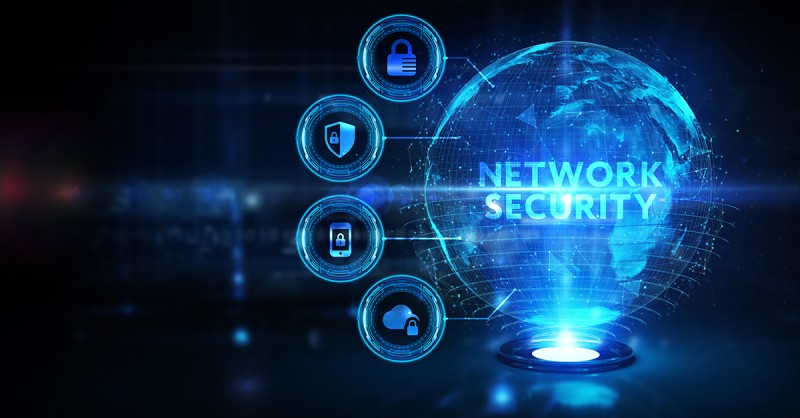Hello!
 In 2018, a safety dilemma at Facebook changed a whopping 50 million users. In 2017, 412 million users accounts were discharged from Friendfinder’s websites and 147.9 million clients were affected by the Equifax data breach. Only 1 year before, 3 billion Yahoo accounts were hacked while hackers were able to steal the information of over 57 million riders and drivers from Uber.
In 2018, a safety dilemma at Facebook changed a whopping 50 million users. In 2017, 412 million users accounts were discharged from Friendfinder’s websites and 147.9 million clients were affected by the Equifax data breach. Only 1 year before, 3 billion Yahoo accounts were hacked while hackers were able to steal the information of over 57 million riders and drivers from Uber.
The simple fact that some of the largest tech firms throughout the world have endured such enormous security failures provides us an insight to just how large an issue cybersecurity actually is. And in case you thought that these breaches are few and far between, the normal amount of recorded breaches each nation in 2017 alone has been 24,089.
Interestingly, India was the country having the greatest annual breaches (over 33,000 documents) whereas the US had 28,500. Additionally, it is important to keep in mind that these are the documented amounts also the real amounts may be several times greater. Security Labs is a boutique penetration testing company with focus on network, cloud, and web/mobile application penetration testing services.
Let’s talk a little bit about why cybersecurity is in such flux today and some of the upcoming long-term solutions are being seen in the markets.
1 – Cyber-attacks have gone from being standard-issue, easily manageable threats to complex attacks.
 Cyber-attacks have gone out of being standard-issue, readily manageable threats to complicated attacks that leverage cutting-edge technology and complex algorithms. Given the highly diverse nature of contemporary attacks along with the sheer quantity of information required to fully document an assault, it is not feasible for cybersecurity teams to process everything within a sensible timeframe. Improving detection and reaction times for cyber threats and empowering individual cybersecurity teams to concentrate on the more tactical dangers is the demand of the hour.
Cyber-attacks have gone out of being standard-issue, readily manageable threats to complicated attacks that leverage cutting-edge technology and complex algorithms. Given the highly diverse nature of contemporary attacks along with the sheer quantity of information required to fully document an assault, it is not feasible for cybersecurity teams to process everything within a sensible timeframe. Improving detection and reaction times for cyber threats and empowering individual cybersecurity teams to concentrate on the more tactical dangers is the demand of the hour.
2 – Companies across the world are now looking at adopting AI-powered cybersecurity solutions.
Automation in cybersecurity isn’t a new idea and has been popular through time. But, with the climbing attack surface, the amount of alarms being generated by safety automation products is generally overwhelming.
 The large severity threats become buried inside a spew of insignificant alarms, and organizations need to spend a whole lot on cybersecurity teams to manually filter during these alarms or deploy customized automatic security solutions which are also prohibitively costly.
The large severity threats become buried inside a spew of insignificant alarms, and organizations need to spend a whole lot on cybersecurity teams to manually filter during these alarms or deploy customized automatic security solutions which are also prohibitively costly.
This is really where AI-powered technology come in the picture. These technologies are a cheap method for organizations to recognize the most crucial risks, hence increasing response and detection times. Actually, 61 percent of businesses now say they can’t do without AI technology in regards to discovering breach efforts, and another 48% state their funding for AI in cybersecurity increases by an average of 29 percent in 2020.
3 – Applications today have become increasingly diverse.
They dwell on various platforms (mobile devices, web servers, application servers, etc) and proliferate from lots of sources– if that is in-house, third party, or industrial Off-the-Shelf (COTS). And while partnerships have been fairly good at protecting the system layer and endpoints of their cybersecurity surface, the application layer itself remains highly vulnerable.
This implies enterprises have to create it as hard as possible for a malicious celebrity to damage the business enterprise or its electronic assets.
4 – A poorly-written piece of code can affect more than just itself.
 A poorly-written part of code may impact more than just itself. The elements it interacts with can also be in danger. A minor flaw could be exploited, harmful, or resulting in damage of crucial pieces of a provider’s infrastructure.
A poorly-written part of code may impact more than just itself. The elements it interacts with can also be in danger. A minor flaw could be exploited, harmful, or resulting in damage of crucial pieces of a provider’s infrastructure.
5 – Bugs
Bugs are generally introduced because of growth team time limits, legacy code which has become vulnerable, either carelessness or even a misunderstanding of insect courses that an attacker will tap. Whatever the rules or automation you’ve got set up, 1 mistake could take down the business.
A great deal of data gets leaked online through innocent errors. In February of 2018, for example, that our crawler discovered details of over 10,000 credit in addition to debit cards of the user of a dominant Indian lender, which were available for sale on the darknet, for $4-5 each cent.
Given this circumstance, safety can’t be merely another layer within the company program but ought to be inherently built to it–a component of the development workflow itself. Matters like malicious code, program backdoors and absence of security performance have to be dealt with during creation itself; and also for existing jobs, via an extensive assessment.
Conclusion
 In the conclusion of the day, cyber attacks are becoming more sophisticated and complicated than previously, along with the defensive techniques that functioned even a couple of decades back are now restricted in their efficiency.
In the conclusion of the day, cyber attacks are becoming more sophisticated and complicated than previously, along with the defensive techniques that functioned even a couple of decades back are now restricted in their efficiency.
Fortunately, there are quite a few innovative cybersecurity solutions providers on the market and they are leveraging cutting-edge technology to construct quicker detection and reaction times.
The majority of these cloud suppliers have highly complex systems to secure your infrastructure improved. Though those programs have a steep learning curve, investing time in establishing appropriate access controls and protection mechanisms may go a very long way in strengthening your own organisation.
Thank you!
Subscribe to our newsletter! Join us on social networks!
See you!






